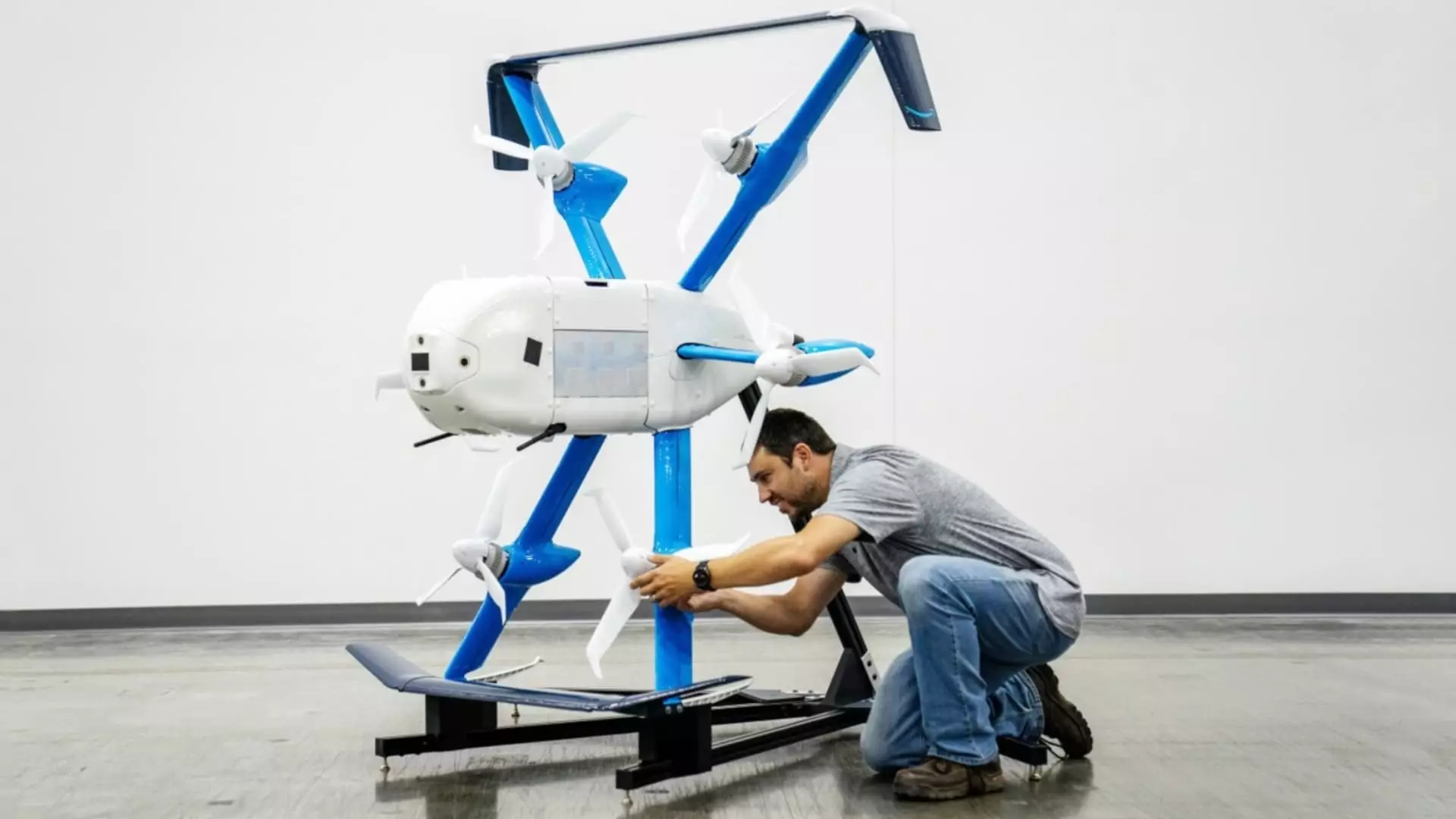In a move that has reignited excitement in the realm of drone logistics, Amazon recently confirmed the revival of its drone delivery service in two key U.S. markets. After a prolonged hiatus that began in January, when operational challenges triggered a temporary halt, the company has resumed its Prime Air deliveries in College Station, Texas, and Tolleson, Arizona. This revival comes on the heels of a significant software update aimed at addressing a mechanical anomaly detected in their MK30 drones—specifically, an issue related to their altitude sensors.
The altitude sensor problem, catalyzed by environmental dust, posed potential inaccuracies in the drone’s position readings, a factor the company deemed serious enough to warrant operational suspension. Despite Amazon’s assurances of no active safety threats during this period, the proactive pause reflects a commitment to safety that echoes throughout its operational ethos. According to Av Zammit, an Amazon spokesperson, the company has meticulously navigated this path to ensure that safety remains paramount in all technological advancements.
Innovative Steps Forward
Following the completion of the software enhancements, Amazon received the much-anticipated nod from the Federal Aviation Administration (FAA), allowing for the resumption of these high-flying deliveries. This regulatory approval represents a crucial green light for Amazon, which has invested significant resources into perfecting its drone technology to align with safety and operational standards set forth by aviation authorities. Zammit emphasized that the demand for Prime Air has seen remarkable growth since the return of deliveries, indicating a thriving market interest that could reshape consumer experiences in e-commerce.
In a vivid demonstration of operational efficiency, David Carbon, an Amazon executive overseeing the drone initiative, shared a striking anecdote. A recent delivery of sleep medication was made to a customer’s home in just over 31 minutes—a snapshot of the kind of rapid service that could become commonplace. While details on the flight distance remain sparse, this instance exemplifies Amazon’s relentless push for rapid delivery systems that function seamlessly within customer households.
Challenges and Reservations
Despite the positive momentum, there are undeniable hurdles in Amazon’s quest to transform drone delivery into a mainstream reality. The company’s ambitious aspiration to deliver 500 million packages via drones annually by the end of the decade still faces substantial logistics and regulatory challenges. Moreover, the broader rollout of such services has confronted many barriers, including regulatory clearances in various international markets and addressing operational disruptions noted during testing phases.
The revelation of the MK30’s recent crashes during test runs raises valid concerns about the reliability and safety of these delivery systems. While Amazon has distanced its operational pause from these incidents, the occurrence of two separate crashes does evoke questions about the balancing act between rapid innovation and safety assurances. Maintaining consumer trust in unmanned aerial delivery systems is contingent upon consistent performance and transparency from the tech giants involved.
The Future of Drone Deliveries
As rumors of expansion into international markets, such as the United Kingdom, swirl, Amazon’s proactive approach towards refining its drone capabilities heralds a significant transformation in logistics. The decision to address community complaints about noise by developing quieter drone models is also noteworthy, illustrating an awareness of the societal impact of drone operations. Furthermore, plans to relocate their delivery hubs further from residential areas reflect an understanding that technological progress must coexist harmoniously with community interests.
By leveraging advancements in design with the new MK30 model, Amazon has positioned itself strategically to address the skepticism surrounding drone deliveries. As the company navigates the complexities of regulatory frameworks, competition, and technological integration, it remains to be seen how quickly the logistics landscape will adapt to what could be a drone-driven future. The innovations currently unfolding could very well redefine fulfillment methodologies across various sectors, marking a new era for consumer convenience.
This transformative phase, underscored by ambition and technological prowess, exemplifies a critical juncture in Amazon’s overarching narrative, pointing toward a bold new horizon in the global delivery ecosystem.


Leave a Reply